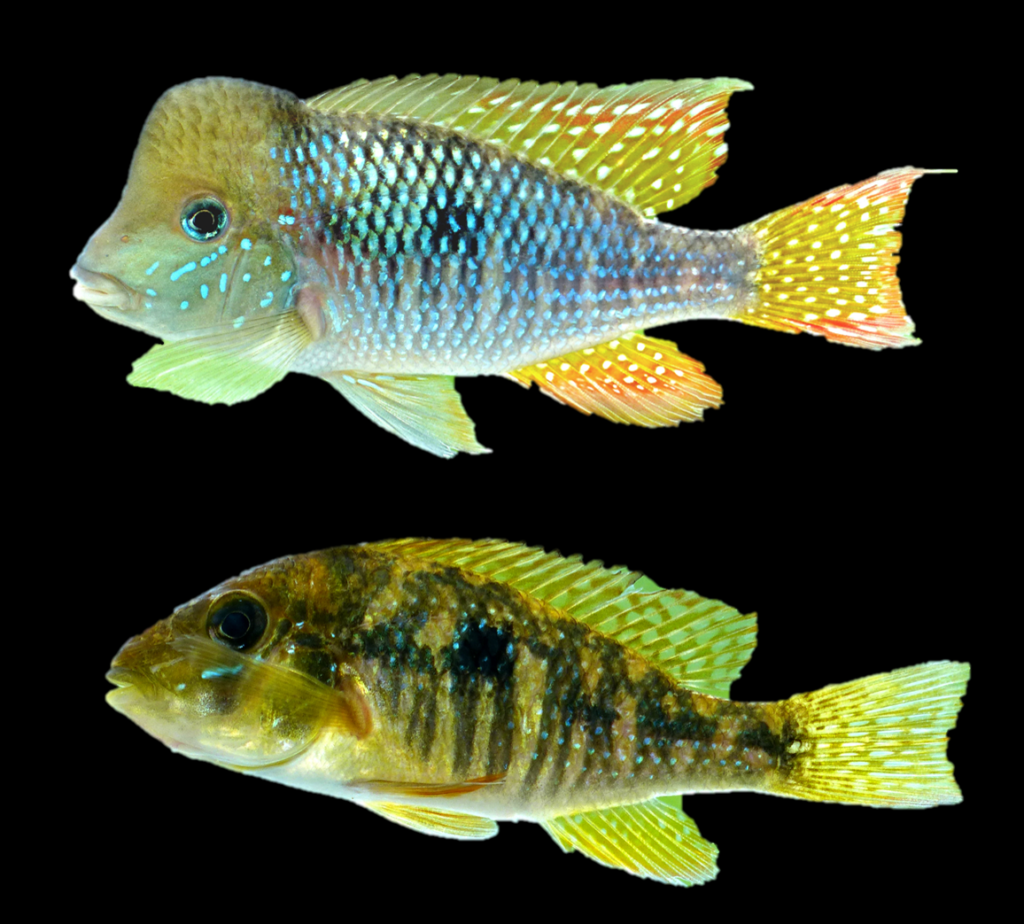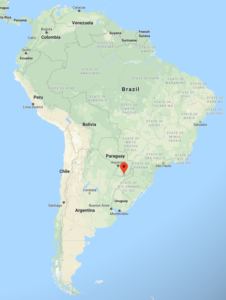
A stunning pair of Gymnogeophagus jaryi sp. nov collected in the Southern tributaries of the Middle Paraná basin in Misiones, Argentina. Image credit: Alonso et. al, 2019.
Great news! Another beautiful eartheater has been described!
Gymnogeophagus jaryi is from Southern tributaries of the Middle Paraná basin in Misiones, Argentina (see map). This new species is the sister species of G. caaguazuensis from the Paraguay basin and is closely related to G. australis.
For you Geo-Philes, the authors give additional details including the fine differences between G. jaryi and G. caaguazuensis. Specifically, G. jaryi has a longer caudal peduncle, non-lyrate tail fins, and light iridescent blue and by white spots in the soft portion of dorsal fin in adult males.
They also describe how it differs from G. australis; specifically stating G. jaryi has a light iridescent blue color on the central portion of scales and on the dorsal portion of trunk and tail, and lack of scales on the soft portion of the dorsal fin.
Other characteristics of this species are outlined in the article by Felipe Alonso and colleagues entitled, Description of a new species of the Neotropical cichlid genus Gymnogeophagus Miranda Ribeiro, 1918 (Teleostei: Cichliformes) from the Middle Paraná basin, Misiones, Argentina. The article is published open source in PLoS ONE.
If you haven’t ventured into keeping cichlids, it is an amazingly diverse group of fishes found across the world – with almost 600 species in the neotropical region alone! Within the genus Gymnogeophagus, there are 18 species across two species groups, the G. gymnogenys group (mouthbrooders) and the G. rhabdotus (substrate brooders). This species is likely very similar in husbandry to other eartheaters – fine substrate, good water quality, and an insectivorous diet.
AMAZONAS Editor and Publisher Mike Tuccinardi suggested that aquarists not get their hearts set on obtaining this new species. “It’s unlikely we’ll see these in the hobby or trade due to their origination in Argentina and Paraguay (there are only limited commercial exports from these countries). The genus Gymnogeophagus has a pretty limited following in the hobby—while colorful, most of them require cooler temperatures for at least part of the year as they are from more temperate regions if the hope is to see any reproductive activity.”
Literature Cited: Alonso F, Terán GE, Aguilera G, Říčan O, Casciotta J, Serra WS, et al. (2019) Description of a new species of the Neotropical cichlid genus Gymnogeophagus Miranda Ribeiro, 1918 (Teleostei: Cichliformes) from the Middle Paraná basin, Misiones, Argentina. PLoS ONE 14(2): e0210166.






